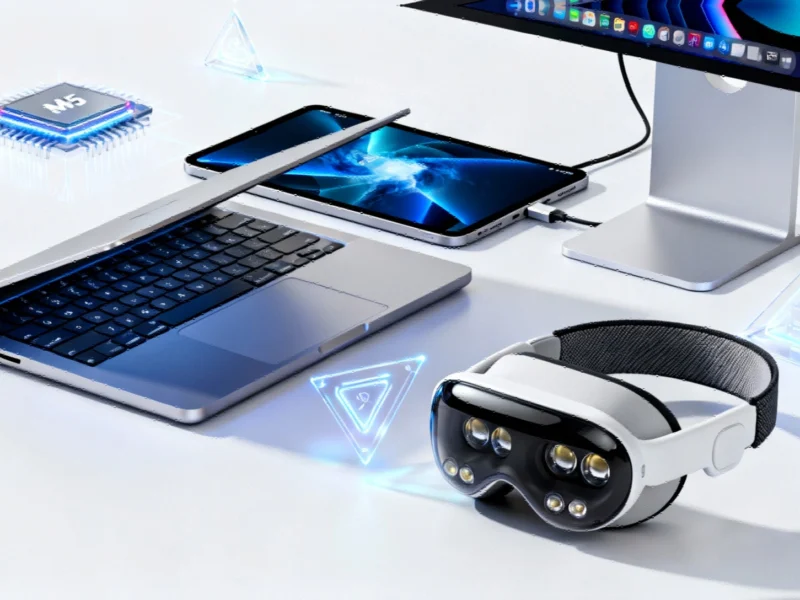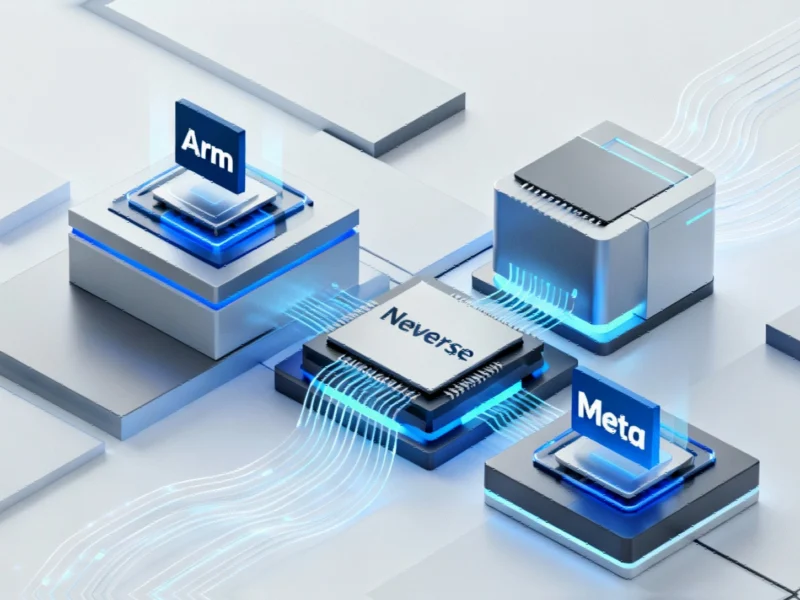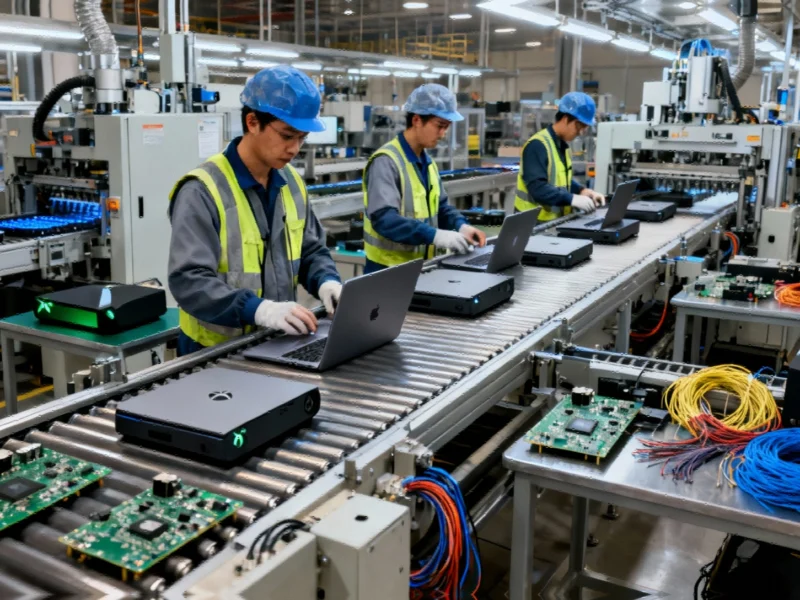Apple’s Strategic M5 Deployment
Apple has unveiled its next-generation M5 chip across three pivotal product categories, marking a significant leap in processing power and artificial intelligence capabilities. The simultaneous deployment across MacBook Pro, iPad Pro, and Vision Pro represents Apple’s most comprehensive silicon update since the transition from Intel processors, signaling a unified architectural approach to computing performance.
The M5 chip introduces a fundamentally redesigned architecture that prioritizes AI acceleration while maintaining Apple’s signature power efficiency. This strategic move comes amid increasing industry focus on AI power management and computational demands that are reshaping how technology companies approach hardware design.
Technical Architecture Breakthroughs
At the core of the M5’s innovation is a next-generation GPU architecture specifically optimized for AI workloads. The chip features dedicated Neural Accelerators for each processing core, a third-generation ray-tracing engine for enhanced graphics performance, and improved shader cores that deliver up to 30% better performance than the previous generation.
The memory subsystem has received substantial upgrades, with bandwidth increased to 153GB/s and support for up to 32GB of unified memory. This enhanced memory architecture is particularly crucial for handling the massive datasets required by modern AI applications and complex rendering tasks.
Industry analysts note that these advancements reflect broader computational growth trends across the technology sector, where processing demands are increasing exponentially with AI adoption.
MacBook Pro: Professional Performance Reimagined
The entry-level MacBook Pro receives the M5 chip as its new foundation, delivering substantial performance improvements for professional users. Storage configurations now extend to 4TB, addressing the growing needs of content creators and developers working with large project files and complex development environments.
This update positions the MacBook Pro as a more versatile tool for professionals engaged in machine learning development, video editing, and software engineering. The enhanced Neural Engine, capable of processing 25 trillion operations per second, enables local execution of AI tasks that previously required cloud computing resources.
iPad Pro: The Tablet as Primary Computer
Apple continues to blur the lines between tablet and computer with the M5-powered iPad Pro. The device now includes Apple’s custom N1 wireless networking chip, providing Wi-Fi 7, Bluetooth 6, and Thread connectivity. Cellular models feature the new C1X modem, delivering up to 50% faster data performance with improved power efficiency.
External display support has been significantly enhanced, with the ability to drive monitors at up to 120Hz with Adaptive Sync technology. Base memory configurations now start at 12GB for 256GB and 512GB storage tiers, reflecting the increasing memory requirements of professional applications.
These improvements come as companies navigate regulatory challenges that can impact technology adoption timelines across various sectors.
Vision Pro: Spatial Computing Evolution
The Vision Pro headset receives its most substantial update since launch, with the M5 chip enabling a 10% increase in rendered pixels and support for 120Hz refresh rates. Battery life extends to three hours of continuous use, addressing one of the key limitations of the first-generation device.
Apple has introduced a new Dual Knit Band design featuring tungsten inserts that function as a counterweight for improved comfort during extended use. The company is also expanding the Vision Pro ecosystem with the Logitech Muse spatial stylus and upcoming support for PlayStation VR2 Sense controllers.
These developments in spatial computing occur alongside ongoing industry collaboration challenges that can influence how quickly new technologies achieve mainstream adoption.
Market Impact and Availability
Apple’s triple-product launch with the M5 chip represents a strategic consolidation of its silicon advantage across multiple form factors. The devices are available for pre-order with official availability beginning Wednesday, October 22.
This coordinated product refresh demonstrates Apple’s ability to execute complex technology deployments across multiple product categories simultaneously, a capability that sets the company apart in the competitive computing landscape.
The M5’s emphasis on AI acceleration comes at a pivotal moment in the industry, as companies across sectors are evaluating how to integrate artificial intelligence into their workflows and product offerings. Apple’s unified approach to silicon development continues to provide distinctive advantages in performance optimization and power management.
As these new devices reach consumers and professionals, they’re likely to influence broader market trends in computing and mobile technology, potentially accelerating adoption of AI-accelerated hardware across the industry.
This article aggregates information from publicly available sources. All trademarks and copyrights belong to their respective owners.



